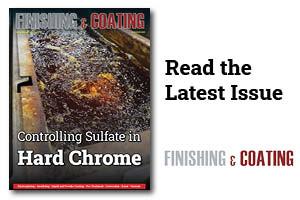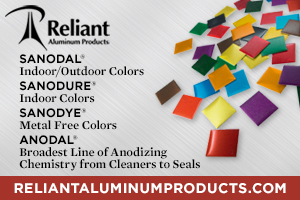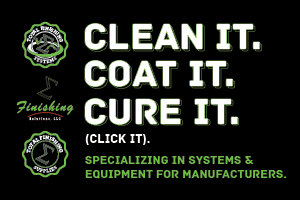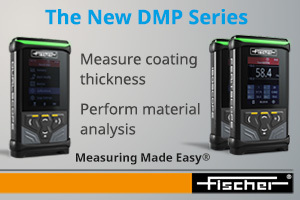Of all the measured parameters we deal with, time is perhaps the one that receives the most attention.
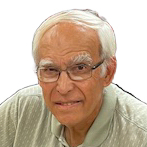 Stephen RudyWe all have 24 hours in one day to accomplish set goals. It’s obvious that time is quite valuable to achieve priorities. The specific time we use to achieve any given activity cannot be rolled back. Time machines are for science fiction. Activities revolve around time, recognizing it as a critical parameter for planning, execution, and review.
Stephen RudyWe all have 24 hours in one day to accomplish set goals. It’s obvious that time is quite valuable to achieve priorities. The specific time we use to achieve any given activity cannot be rolled back. Time machines are for science fiction. Activities revolve around time, recognizing it as a critical parameter for planning, execution, and review.
That is why compensation in the form of goals achieved must always be an integral part of the time. Time management is an important concept. It is intended to keep us on track. Date planners, electronic messaging, text messages, wall calendar notes, and Post-it notes are several devices intended to help and remind us of what we are to accomplish or schedule. Are these helpful? Certainly, if used properly and within the scope of application and adherence to.
Although it may seem infinite, time has a way of proving its finite length every day. Just over 80% of 2025 has already been consumed.
In the metal finishing industry, the value and importance of time are highlighted in many ways. No matter how inconsequential it may seem, it is surprising just how critical it is. Finishers and suppliers share the responsibility to focus on the importance of time. It is crucial because the quality of finished coatings and treatments depends heavily on it.
Typical processes we deal with include chemical immersion treatments and electrically powered reactions. These revolve around basic scientific principles. No matter how innovative, updated, or new systems are developed, time will be at the center of success. The term “time, temperature, and concentration” is an important guide to accomplish successful surface treatments.
In another industry aspect, outside considerations from government and regulatory agencies incorporate time as an important factor. Let us consider some of these items and how they interact with time as a valuable parameter.
Mass Finishing
The process involves mechanical energy, chemical reactions, and time to modify the surface of parts, achieving the desired characteristics. The objective may be cut down, deburring, or burnishing. Any such cycle is dependent on chemical concentration, the ratio of media to parts, the operating conditions of the equipment (e.g., barrel or vibratory), the temperature of the solution, and the time of the cycle. Solution temperatures do not vary much. It is generally room temperature, rarely warm. Chemistry typically relies on proprietary blends in proper dilution to accomplish the specified treatment. Time is the allocated driving force to accomplish the surface finish. Modifying the other listed parameters will normally affect how long it takes to complete the cycle. This has a bearing on desired production throughput.
Surface Preparation
Whether the surface treatment is electroless, electrolytic, or anodized, cleaning and activation are typically the first and most important steps, as there are distinct similarities between these initial preparation treatments. In both, unwanted surface materials are removed, thereby preparing the base metal for subsequent treatment. Soak cleaning is predominantly an immersion step. Parts are conditioned in an alkaline solution that usually includes surfactants, builders, inhibitors, and alkaline salts. Oily soils and grease are removed in this step. The concentration of this cleaning formulation is developed to achieve the desired effect in a specific time sequence. It normally meets the dwell time programmed into automatic process lines. Concentration and temperature will modify the time according to an acceptable target. An old finisher’s measure is very effective: for every 20-degree rise in temperature of the cleaning bath, the required time for cleaning is halved.
Electro cleaning adds mechanical scrubbing action to further enhance the effect of surface preparation. The applied current density generates a significant amount of gas bubbles (primarily oxygen, due to the anodic condition of the parts) to remove or loosen unwanted surface materials such as scale, oxides, and rust. Voltage requirement is affected by the solution temperature and concentration of the electro cleaning formulation. Desired time is contingent upon concentration and temperature. The electro cleaning surface treatment is usually allocated less than half the time of the previous soak-cleaning step. Time is a valuable parameter to achieve optimum cleaning.
Acid activation promotes surface conditioning by neutralizing alkaline films, dissolving oxides, scale, and rust, and activating the surface before subsequent finishing. The quality time required is based on the acidic solution concentration and its operating temperature. An optimum balance between these two parameters affects the required time for this final surface preparation step. In many instances, it may be equal in duration to the previous electro cleaning step or even half of its duration.
Electroplating
Every process bath used to deposit a metal or alloy conforms to Faraday’s Law: the quantity of electricity that is transferred per equivalent weight of an element or its ion. The quantitative value is 96,500 coulombs. The desired or required deposit thickness is related to the applied current density and time of application. As the current density increases, the plating time required to meet the thickness requirement decreases. There is a balance in the relationship, where related conditions and parameters are critical. Bath chemistry, permissible temperature and current density ranges, concentrations of chemical additives, and purity of the plating solution are important to each system. Optimizing these conditions will allow the process to meet the plating requirements in the optimum time.
Faraday’s Law means that, as structured, it cannot be violated. Absolutely no deviance from it.
Faraday’s Law: m = Zlt
- m is the mass of the metal deposited
- Z is the electrochemical equivalent
- I is the applied current
- It is the time required to deposit the targeted metal deposit thickness
For simplicity, tables of Electrochemical Equivalents and times to electrodeposit metals at 100% efficiency are given to assist the plater.
Anodizing
Anodizing differs from electroplating in that an oxide film is electrolytically developed on aluminum, where the part is positively charged. Development of the preferred coating thickness is dependent on current density, time, anodizing bath temperature, and chemical concentration. A simple guide to follow is the “720 Rule”. It breaks down to applying 720 amp minutes per ft2 of aluminum surface area to anodize, developing one mil (0.001 inches, 25.4 micrometers) of the oxide coating.
This is a good formula for Types II and III anodic coatings. Longer anodizing times are required as thicker coatings are desired. Different aluminum alloys require adjustments to the anodizing process. Tables and charts are available guides to determine optimum voltage settings and times in this respect.
Electroless Deposition
The most common is the autocatalytic deposition of nickel. The technology was developed so that the oxidation/reduction reaction for depositing nickel adheres to a fixed temperature range, typically 180-190 °F (82-88 °C), for production purposes.
Post and Specialty Treatments
Several types can be mentioned. These include: chromates, phosphates, black oxides, and rust inhibitors. Optimizing the temperature and concentration of chemical additives for each treatment provides the best results within the recommended time range.
Our industry also acknowledges time as a valuable parameter in relation to mandates and changes. Regulatory agencies require adherence to specific limitations regarding effluent discharges and handling of sludges in a time-scheduled manner. Manufacturing and metal finishing programs, such as the implementation of RoHS and NADCAP, impose a deadline for finishers and suppliers to conform to set operating requirements, with a strict time program for auditing.
Time is a valuable part of any facet of the metal finishing industry. On time: manufacturing, finishing, packaging, and delivery can only occur if every step in any process is optimized. In so doing, time is a most valuable part of the system. There can be sufficient time, if used wisely. The clock is ticking. Are you on time?
As Grace Hopper, US Navy Rear Admiral, says: “Watch your nanoseconds.”
Stephen F. Rudy, CEF, is president of Chem Analytic and has written extensively about the finishing industry. Visit www.chemanalytic.com or call him at 917-604-5001.






